#michigami
Explore tagged Tumblr posts
Text
Author's Note: The Indigenous Future
I would be remiss if I did not mention the indigenous elephant in the room within ‘Far Past the Ring’.
As you might have gathered, much of the background of both Medina Station and the three original characters are deep within First Nations/American Indian backgrounds*.
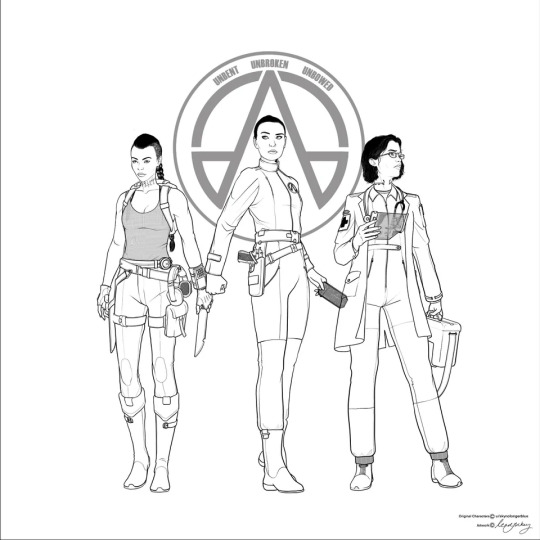
(left to right: Dr. Sjael Drummer, Camina Drummer, and Dr. Tanke Drummer)
I have written both Sjael and Tanke Drummer as being of mixed Ojibwe descent through the Drummer side of their family, as is their cousin, canon Expanse character, Camina Drummer (Cara Gee, her actress, is Ojibwe First Nations, though whether or not Camina is in the show is not confirmed). Additionally, Timon Chapelle, Tanke’s husband, is of mixed-Metis descent as well. More about the land practices of Medina Station and the indigenous heritage it is drawn on can be read in my previous piece on the matter.
While researching for this work, I dug into the local history of the land I live on, which, coincidentally, is the unceded land of the Anishinaabe people. I am a settler, but I take deep pride in the place that I reside. I find it a responsibility as a citizen of my country to do so.
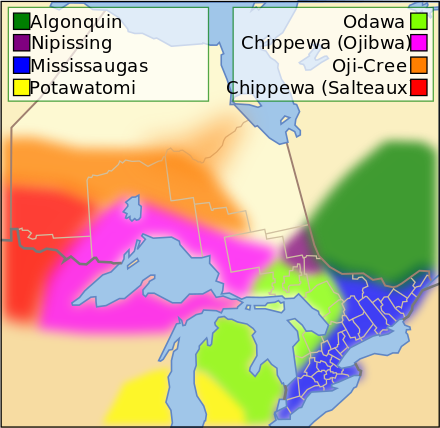
(The region of the various Anishinaabe peoples, taken from Wikipedia. The author is not going to directly tell you where they are personally located)
As you might have guessed, the Kind Man (a form that the Protomolecule has taken in order to communicate with both Omega and James Holden) uses the form of Tanke and Sjael’s deceased father, Dr. Aki Drummer.
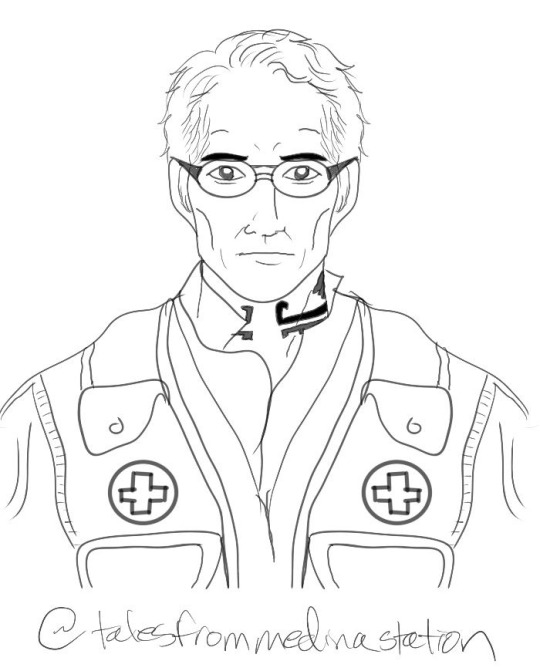
(Image: Dr. Aki Drummer, drawn by the author in a quick sketch)
Aki is a Belter man of Ojibwe descent, who, while his story is not fully explored in this piece, does recall and use his heritage to better understand the nature of the humans that he serves as a physician, and later on, the Protomolecule uses to better understand the humans creating contact with each other from across the stars.
The Kind Man also tells Omega the story of the Legend of the Bluebonnet, which comes from the Comanche tribe of Texas, another American tribe who made the prairies of the United States their home for time immeasurable. The Kind Man mentions that, although he is not Comanche, he understands the story. The tale is a legend of a young girl’s sacrifice to save her prairie home and her people ... .the story that Omega will find herself repeating at the end of ‘Far Past the Ring’.
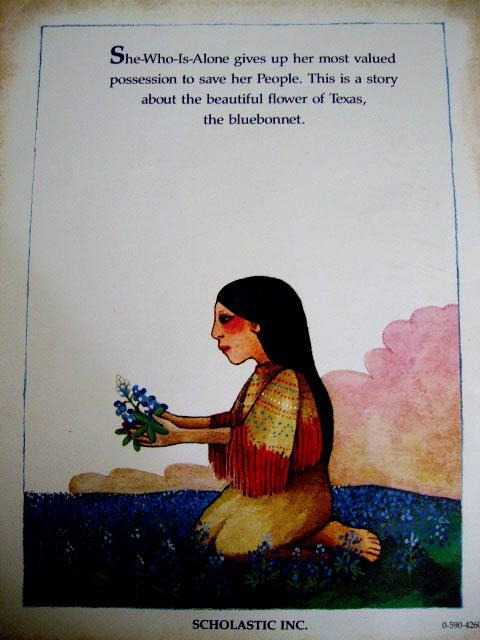
(Image from 'The Legend of the Bluebonnet', by Tomie DiPaola. copyright Puffin Books)
The Kind Man also repeatedly uses a word in Ojibwe, one that, when I heard its meaning from James Vukelich (Ojibwe-Turtle Mountain) made me stop, write it down, and listen to his podcast episode again. I immediately knew this word would become a part of the story.
(If you can, please give his work a listen. He is a wonderful speaker.)
That word is Gidinawendimin, one word that means, ‘we are all related’. Vukelich goes into detail about how it is not only the people, but the animals, earth, water, all of life around us. And I could not help but think–”Holy hell, this is the thesis of the story.”
So, why am I rambling on about all of this?
Because indigeneity has its role in our future, and I tried my best to not only reflect that in this story, but because I staunchly believe in it as well.
The Belters are the people who helped build the solar system in ‘The Expanse’. They worked and lived in space to the point where many of their bodies can not survive normal gravity. Throughout the series, they face issues regarding access to water, air, and so many things that we often take for granted. They are seen as less than human in their own native environment of the Belt, and are often discriminated against by citizens of planets like Earth and Mars.
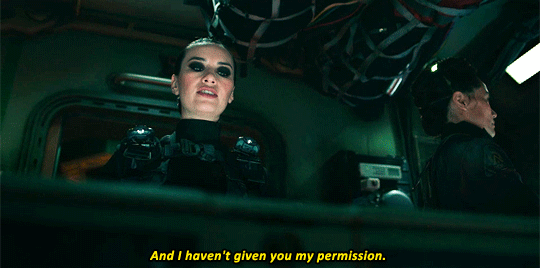
Additionally, in the Star Wars universe, the clones are copies of a man from Mandalore, portrayed by an indigenous actor, and whether or not their indigeneity is canon in the show, I prefer to see it as such.
I want to be under the impression that, like in the real world, the dehumanization of indigenous peoples has irreparable damage to culture and heritage, to say nothing of the social bonds between people.

This is known as intergenerational trauma, and is explained beautifully here in a video from Australia.
Fiction can be a powerful metaphor. In this case, this trauma rings through the clones within the Star Wars universe, and if they survive into greater society, will be a burden that their people will carry. Their descendants. The clones were people bred to serve one purpose, that of violence and war, and expected to be expendable machines, not as humans. They were stripped of culture, family, and heritage, and find themselves broken and lost when their use to the government is no longer sustainable.
It also isn’t lost on me that another character played by an indigenous actress–the incomparable Bobbie Draper, played by Samoan-Kiwi actress Frankie Adams–suffers a similar fate in The Expanse. She’s used by her government and tossed aside. But Draper rallies, finds camaraderie in others, and is able to be part of a team that saves the universe.
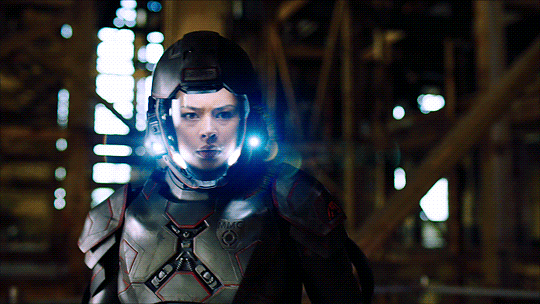
She, like some survivors of systematic abuse, is able to help others navigate through the challenges of finding oneself again thanks to her own experiences. This is especially seen in her friendship with Hunter in Far Past the Ring, whose own trauma comes out in painful paranoia, anxiety, and rage that almost destroys everything he loves.
When common grounds are found, and alliances are made, a powerful voice of continuity and fortitude can be forged. With that, challenges, enemies can be fought, battled, and won. With friendship and the strength of rebuilding and reconnecting with culture–and respecting those of indigenous people–we can move forward.
We are all related.
I wrote all of this on the eve of September 30th, the National Day for Truth and Reconciliation in Canada, the country that brought us The Expanse.

(Taken from National Day for Truth and Reconciliation and Orange Shirt Day - Waterloo Region District School Board (Waterloo Region District School Board)
This day is to commemorate the thousands of children of indigenous heritage who were taken from their homes, stripped of their culture and heritage. Many of them never came back to their families and homes. Thousands died.
It is only in recent history that this is acknowledged.
Similar instances also occurred in the United States, Australia, and countless other nations where indigenous people and their cultures were seen as an alien threat. They were not seen as fellow men, but as a part of the land that needed to be eradicated, controlled, and wiped out.
But survival happened. Still happens.
I hope that is reflected here, in a fictional story about the future…where the descendants of indigenous people use their skills and culture to push their people forward in our solar system.
Who forge friendships and alliances, who work to heal their trauma with the strength of their fellow man.
Who work together to stop a terrible empire from destroying their home.
I am a settler in the United States on the shores of Michigami, but I am a firm believer that the future of humanity lies within indigeneity. We will not reach the stars without it.
I have humbly done my best to reflect that in this story.
Miigwich.
More information can be found here:
National Day of Truth and Reconciliation: https://www.canada.ca/en/canadian-heritage/campaigns/national-day-truth-reconciliation.html
James Vukelich’s website: https://www.jamesvukelich.com/
Ojibwe Rosetta Stone: https://www.culture.aanji.org/language/ojibwe-rosetta-stone/
*=I use both terms here, as the Ojibwe/Anishinaabe people, as well as the Metis, are located in both the United States and Canada. Cara Gee herself is Canadian.
#indigenous#first nations#native american#national day of truth and reconciliation#michigami#ojibwe#orange shirt day#canada#great lakes#the clone wars#the expanse#the bad batch#fanfiction#crossover fanfiction#indigenous languages#tech x sjael drummer
21 notes
·
View notes
Text
OC POSTING TIME

From left to right: Michigami Michiko, Nakama Hikari, Enda Ryuusei and Isobe Izuya. They're online friends on Nightcord and they produce virtual singer songs together. They're really unknown, and the quality of their songs are decent at best, but they have a lot of fun together!
Michiko is a lovely cringe 13 year old. She's really talented at drawing and editing, and does the MVs for the group. She's in loads of fandoms and chronically online :^) She gets bullied in school and along with the pressure school gives she's going Through It, so to say. She got Nightcord when she was 10, and met the others in a server. They realized just how young she was an dragged her into another server together. Becoming vocaloid producers was also her idea initially. Her Nightcord username is ☆Yupii☆, which is in latin script because it's cool
Hikari is a very, very troublesome girl. She causes a lot of chaos in class, but despite that she somehow gets good grades. She's really good at literature and Japanese in particular, and that's also why she does the lyrics. She also tunes the virtual singers. She suffers from neglect from her parents, and on top of that her parents fight a lot. She wanders around the city when she isn't home and on Nightcord. Hikari doesn't really have any friends besides her group of Nightcord friends. Outside of school, she loves infecting Ryuusei with her troublemaking and they do stupid stuff together. Her username is Hikki, which is in hiragana.
Ryuusei is a stoic and kinda awkward but very animated guy. He records instruments for Izuya since his parents are famous musicians and he mixes Izuya's compositions. Though he hopes to be able to compose something himself one day. His parents put a lot of pressure on him to succeed academically, and it gets to the point where even if he does really well on a test he still gets complaints. Like Hikki, he doesn't have any friends. He's so focused on school and their group that he doesn't socialize. His Nightcord username is the funniest to me... It's Ryuusei. The fun part is that the meaning is different: His username means meteor (流星), while his actual name roughly means "a cleared up gem" (琉晴). The kanji are kinda similar as well kejeksjw. So basically, no one in his friend group knows which meaning it is whenever he's getting called by his name.
Izuya is the oldest of the group, in fact, he's 27 and a teacher at Kamikou. He's rather pathetic in the cringefail way. He teaches English and music, and he composes the songs for their group. He happened to grow up in Vivid Street, which made him passionate about music though not about singing. He was there at RAD BLAST when he was 10, and he told his younger sister about it. He moved out before the main story, and he's having struggles paying rent so he does a lot of part-time jobs. His username is Lint, which means ribbon in Dutch. It's written in katakana.
I'm stuck between choosing Hikari as the leader or Michiko, and I don't even have a unit name yet 😔
The theme of this unit is art in general. They love writing, drawing and music and more. The SEKAI is only owned by Michiko but Miku called upon the others to help her. It's called Creation SEKAI by the way :) (haha that's my blog handle). The unit members all struggle from passive suicidal thoughts, and they have lost all hope for the future. It's especially bad for poor Michiko. Basically, they're kinda like niigo but less. Mentally ill...
#creationsekai was here#michigami michiko#nakama hikari#enda ryuusei#isobe izuya#project sekai ocs#オトTetrad♪
3 notes
·
View notes
Text
Indigenous People's Day

DR. HENRIETTA MANN Cheyenne
On this Indigenous Peoples' Day, we are featuring Matika Wilbur’s recent publication Project 562: Changing the Way We See Native America, published by Ten Speed Press in 2023. Wilbur (b. 1984) is a visual storyteller and member of the Swinomish and Tulalip peoples of coastal Washington. She holds a degree from the Brooks Institute of Photography alongside a teaching certificate that has shaped her style of educating through narrative portraits.
Project 562: Changing the Way We See Native America, a book born from a documentary project of the same name, resolves to share contemporary Native issues and culture. In 2012 Wilbur set out from Seattle to visit and photograph all 562 plus Native American sovereign territories in the United States.
Wilbur’s engagement with the communities she visited resulted in the creation of hundreds of dynamic portraits and documentation of conversations about ��tribal sovereignty, self-determination, wellness, recovery from historical trauma, decolonization of the mind, and revitalization of culture.” She refers to her portraiture approach as “an indigenous photography method” that includes several hours and sometimes days of interaction with the participants, an exchange of energy and gifts, and asking sitters to choose their portrait location. The outcome is a stunning collection of Native narratives and portraits.

GREG BISKAKONE JOHNSON Lac Du Flambeau Band of Lake Superior Chippewa Indians
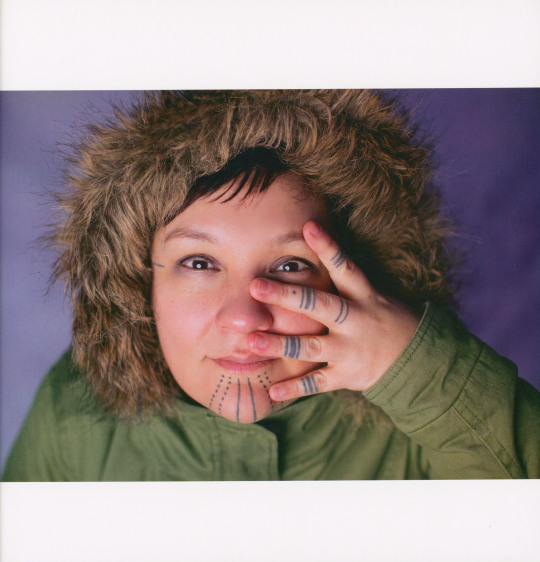
HOLLY MITITQUQ NORDLUM Iñupiaq

J. MIKO THOMAS Chickasaw Nation
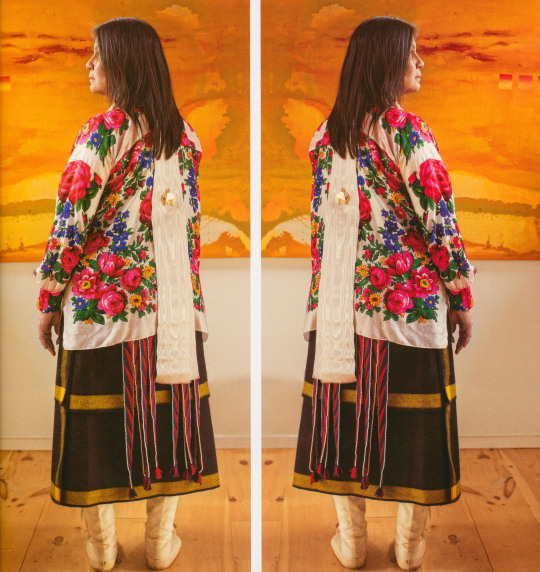
MOIRA REDCORN Osage, Caddo

HELENA and PRESTON ARROW-WEED Taos Pueblo/Kwaatsaan, Kamia
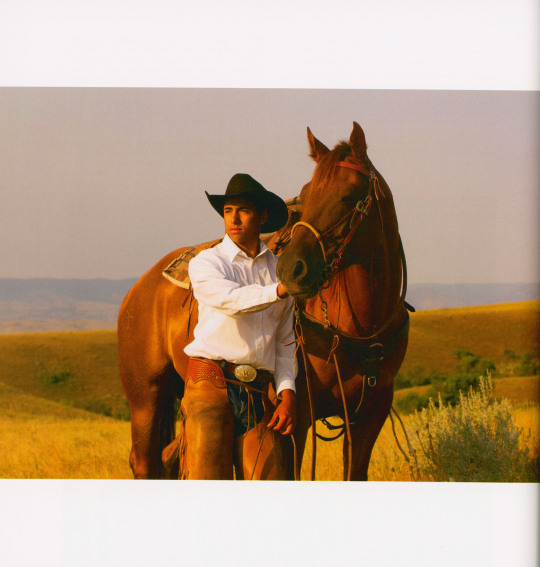
STEPHEN YELLOWTAIL Apsáalooke (Crow Nation)

LEI'OHU and LA'AKEA CHUN Kānaka Maoli
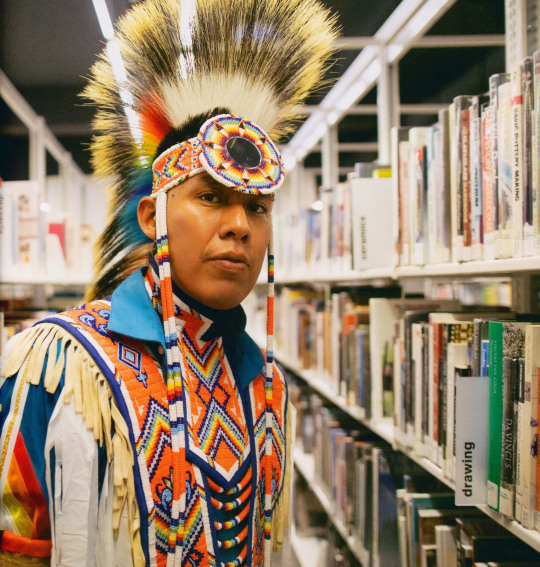
ORLANDO BEGAY Diné
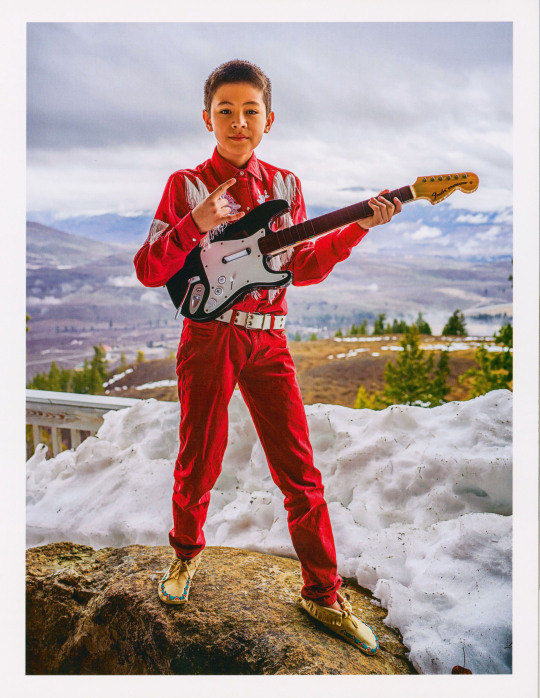
KALE NISSEN Colville Tribes

GRACE ROMERO PACHECO Santa Ynez Band of Chumash Indians

ISABELLA and ALYSSA KLAIN Diné
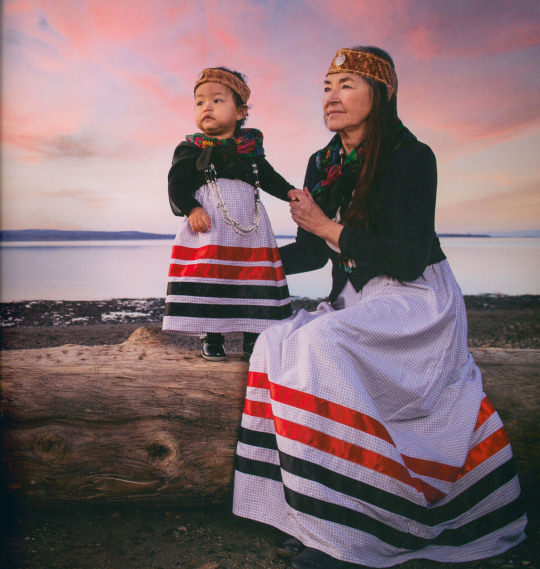
NANCY WILBUR Swinomish
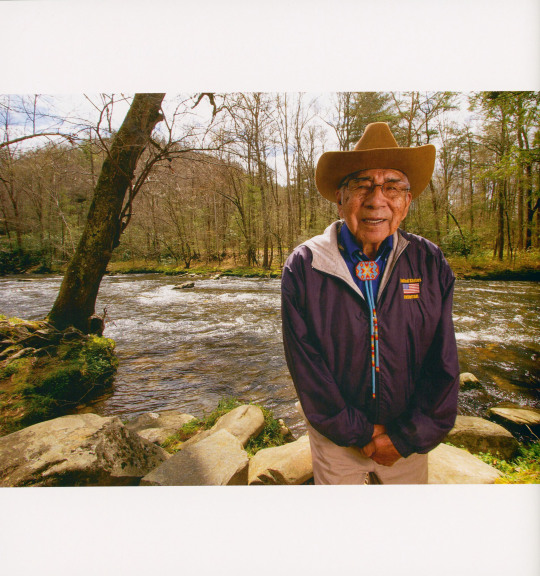
DR. JEREMIAH "JERRY" WOLFE Eastern Band of Cherokee Indians
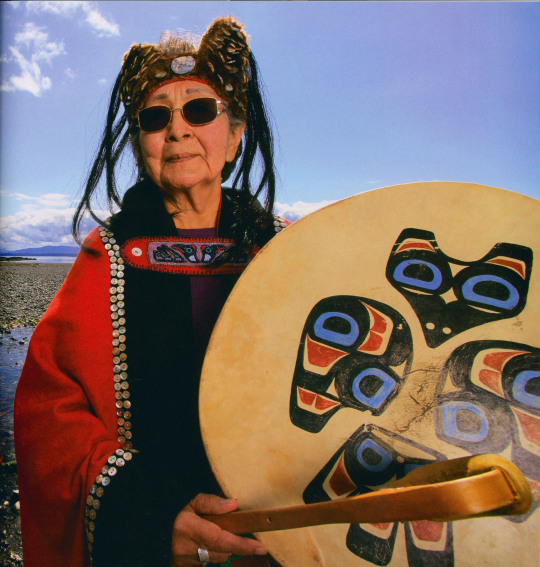
RUTH DEMMERT Tlingit
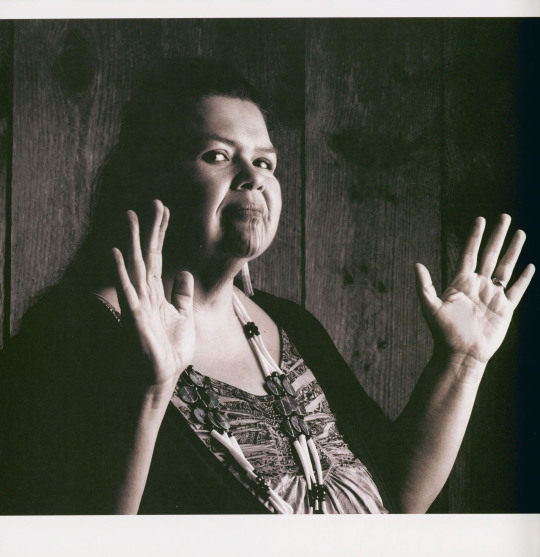
MARVA SII~XUUTESNA JONES Tolowa Dee-Ni' Nation, Yurok, Karuk, Wintu
Matika Wilbur will be speaking on UW-Milwaukee's campus Thursday, November 16 from 6-7p.m. in conjunction with her exhibition Seeds of Culture: The Portraits and Voices of Native American Women on view at the Union Art Gallery November 16 through December 15, 2023.
-Jenna, Special Collections Graduate Intern
We acknowledge that in Milwaukee we live and work on traditional Potawatomi, Ho-Chunk, and Menominee homelands along the southwest shores of Michigami, part of North America’s largest system of freshwater lakes, where the Milwaukee, Menominee, and Kinnickinnic rivers meet and the people of Wisconsin’s sovereign Anishinaabe, Ho-Chunk, Menominee, Oneida, and Mohican nations remain present.
#indigenous peoples' day#matika wilbur#project 562#Ten Speed Press#Native Americans#holidays#UWM Native American Literature Collecton
848 notes
·
View notes
Text


This idiot makes it hard to get good pictures of things sometimes, but the new pattern has even been cat tested and approved! Gambit scarf now on etsy! https://www.etsy.com/shop/michigami https://www.etsy.com/listing/1840190234/charged-cards-gambit-inspired-scarf

21 notes
·
View notes
Text
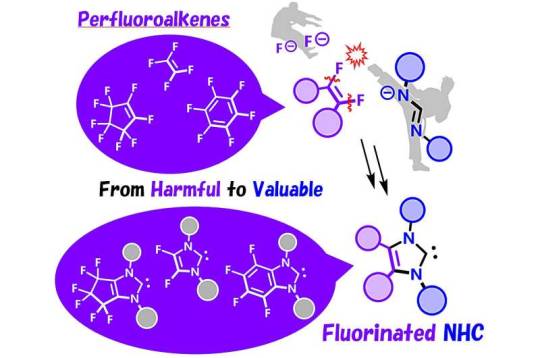
Converting PFAS 'forever chemicals' into valuable compounds
Commonly known as "forever chemicals," PFAS are notorious for persisting in the environment and in our bodies. Osaka Metropolitan University chemists may put an end to the "forever" life of PFAS with their simple yet innovative technique that converts these harmful substances into valuable compounds. A research group led by Professor Masato Ohashi and Assistant Professor Kenichi Michigami of the Graduate School of Science at Osaka Metropolitan University has successfully synthesized ligands called fluorine-decorated N-heterocyclic carbenes (NHCs) from perfluoroalkenes, a type of PFAS (perfluoroalkyl and polyfluoroalkyl substances). The NHCs developed in this study play significant roles in stabilizing unstable molecules as well as enhancing the performance of their ligated transition metal complexes. Their findings were published in the Journal of the American Chemical Society.
Read more.
20 notes
·
View notes
Text

The map from my alternate history story The World's Other Side, now being serialized on Royal Road and Substack (and weeks earlier on Patreon)
You might enjoy:
"We have safely landed, but please do not release your crash-netting. You will be free to collect your luggage and move about the cabin once the projectile has been completely degaussed."
"The black depths of the Michigami yawned below him, but the surface waters were clear. It was easy to make out T'hangsagt's legs, kicking slowly at the curtain of shadow under the overturned boat."
"Something zipped through the air a few feet away, and the ground popped up in a little cloud of dust. Bounce realized she'd just missed being shot. Then George tackled her."
Or start at the beginning.
2 notes
·
View notes
Text
Converting PFAS “forever chemicals” into valuable compounds.
Commonly known as “forever chemicals,” PFAS are notorious for persisting in the environment and in our bodies. Osaka Metropolitan University chemists may put an end to the “forever” life of PFAS with their simple yet innovative technique that converts these harmful substances into valuable compounds. A research group led by Professor Masato Ohashi and Assistant Professor Kenichi Michigami of the…

View On WordPress
0 notes
Text
Kokoro Jonker: she prefers writing but when it's japanese she types
Avery Dijkstra: types more often but she doesn't mind writing when it isn't tedious
Berrie van der Meer: ALSO a typer but she does NOT like writing. She thinks it's inefficient
Nakama Hikari: she's absolutely a writing by hand fan. She does shodou sometimes but she mostly likes showing off that she knows lots of kanji
Michigami Michiko: typer
Enda Ryuusei: typer but when Hikari gets annoying he writes to compete against her kanji knowledge (and loses)
Isobe Izuya: ....typer
does your oc like to write stuff by hand or type?
70 notes
·
View notes
Text

Day 16 Michigami🐧 Penguins are so round and wholesome
13 notes
·
View notes
Photo
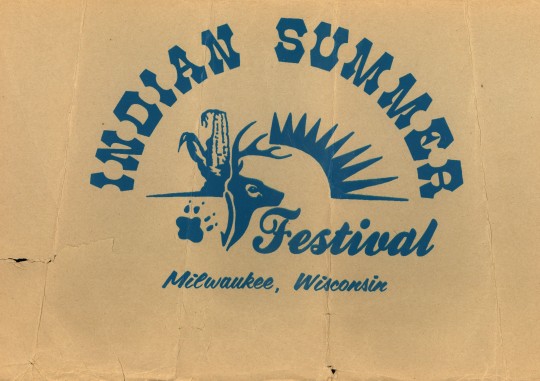






Milwaukee’s Indian Summer Festival (Part 2)
Indian Summer is noted as the “largest Native American gathering of its kind in the country” (https://www.indiansummer.org/). In our prior post, we noted that Milwaukee had its inaugural festival in September 1987. The pictured posters are from subsequent years of the festival and are included in the publicity materials within the collection (UWM Mss 250) along with materials that reference Education Day and the annual Winter Pow Wow at the Wisconsin State Fair Park.
Milwaukee’s Indian Summer Festival is on-going and continues to be an event that is significant in educating and engaging the public with the history and culture of Milwaukee’s indigenous communities. As always, we acknowledge in Milwaukee that we are on traditional Potawatomi, Ho-Chunk and Menominee homeland along the southwest shores of Michigami, North America’s largest system of freshwater lakes, where the Milwaukee, Menominee and Kinnickinnic rivers meet and the people of Wisconsin’s sovereign Anishinaabe, Ho-Chunk, Menominee, Oneida and Mohican nations remain present.
#Native American History#Ethnic festivals#Milwaukee history#UWM archives#Native American Heritage Month#festivals#Indigenous history#Wisconsin history
29 notes
·
View notes
Text
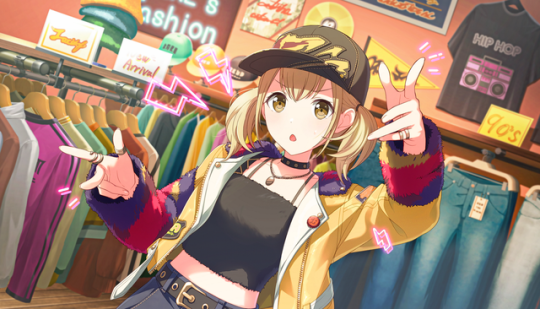
Welcome to creationsekai, tumblr user!
My name is Cat / Punny!
I don't use pronouns so refer to me by my name. I like Project SEKAI and I decided to make a sideblog for my project SEKAI posting!!! I'll post my fanmade units, random art and doodles, AUs, rambling and the like. I don't really ship romantically (only minoharu), what I DO like is QPR beaming my fav pairs!
I have no DNI but I block people I don't like. Don't send NSFW asks about prsk characters or myself, but DO send asks about project sekai! I love discussing the characters
This blog was lovingly named after my oc's Sekai :)
Trans rights are human rights!
Tag system:
Every character is tagged. Japanese name order for all my posts is the standard, but I will tag more stuff on my posts for reach
I tag all the sibling duo, units and certain groups of characters.
Romantic ships will be tagged, though every time that happens expect that I see it as qpr instead hrishej
#creationsekai was here — My posts, or reblogs with a comment
#reblog — yeah.
#asks — yeah.
#queue sekai — queued posts. They're exclusively reblogs
#not project sekai — when there's no prsk </3
#my art — Ard 📈. Do not repost it to pinterest or something. I will kill and maim you. May include art forms other than drawing
#headcanons — yeah.
#project sekai au — au posting 💯
#project sekai oc — my ocs :)
#story discussion — Character/story analysis. It can be indepth or the most simple observations on this earth (the latter usually)
My OC tags:
#東京P
#mishima una — a warm blanket
#yoisaki aino — you can fix her (kanade) by giving her a daughter
#witchy✦sweet
#youha kana — pink genki girl
#aihara ren'a — blue student council president girl
#ouki miki — yellow energetic girl
#shigaki rika — purple stoic girl
#@lightersZONE
#isobe utaha — in dire need of parental validation
#オトTetrad♪
#nakama hikari — gremlin
#michigami michiko — cringe 13 y/o
#enda ryuusei — faux nerd
#isobe Izuya — pathetic man
#RHYTHM:DATA
#nose akira — touch grass simulator player
#tsunemi mirei — normie videogamer
#hayami mion — mainstream music hater
#oshikiri hiyori — it's not always up to you to fix shit stop
You reached the end :) As a gift have my main blog: @maybe-a-gatto-or-a-catto
1 note
·
View note
Text













Voices of the Land
What better way to celebrate Indigenous Peoples’ Day than to highlight this landmark anthology that commemorates the Indigenous Peoples of North America? When the Light of the World was Subdued, Our Songs Came Through: A Norton Anthology of Native Nations Poetry, edited by Joy Harjo with Leanne Howe, Jennifer Elise Foerster, is a curated collection that features the poetry of 160 poets each showcasing a distinct voice from nearly 100 Indigenous Nations. This is the first edition from 2020, published by W. W. Norton & Company in New York.
The anthology is the first to provide a historically comprehensive collection of Native poetry. The literary traditions of Native Americans, the original poets of this country, date back centuries. The book opens with a blessing from Pulitzer Prize winner American Kiowa/Cherokee N. Scott Momaday (1934-2024) and contains introductions from contributing editors for five geographically organized sections. Each section begins with a poem from traditional oral literature and closes with emerging poets, creating a rich and diverse tapestry of Indigenous voices.
Joy Harjo, a member of the Muscogee (Creek) Nation, is a prominent figure in the literary world. She is known for her work as a poet, musician, playwright, and author. In addition to her contributions to literature, Harjo is also a celebrated performer and has released several albums combining poetry and music. In 2019, she made history by becoming the first Native American United States Poet Laureate and only the second to serve three terms. Throughout her career, Harjo has been a vocal advocate for Indigenous rights and has used her art to shed light on the experiences of Native peoples.
The following is an excerpt from Harjo’s introduction to this work:
“The anthology then is a way to pass on the poetry that has emerged from rich traditions of the very diverse cultures of indigenous peoples from these indigenous lands, to share it. Most readers will have no idea that there is or was a single Native poet, let alone the number included in this anthology. Our existence as sentient human beings in the establishment of this country was denied. Our presence is still an afterthought, and fraught with tension, because our continued presence means that the mythic storyline of the founding of this country is inaccurate. The United States is a very young country and has been in existence for only a few hundred years. Indigenous peoples have been here for thousands upon thousands of years and we are still here.”
View other Indigenous Peoples' Day posts.
View other posts from our Native American Literature Collection.
-Melissa (Stockbridge-Munsee), Special Collections Graduate Intern
We acknowledge that in Milwaukee we live and work on traditional Potawatomi, Ho-Chunk, and Menominee homelands along the southwest shores of Michigami, part of North America’s largest system of freshwater lakes, where the Milwaukee, Menominee, and Kinnickinnic rivers meet and the people of Wisconsin’s sovereign Anishinaabe, Ho-Chunk, Menominee, Oneida, and Mohican nations remain present.
#indigenous peoples' day#When the Light of the World was Subdued#Our Songs Came Through#joy harjo#Leanne Howe#Jennifer Elise Foerster#W. W. Norton & Company#N. Scott Momaday#first nations#native americans#Native poetry#indigenous literature#indigenous poetry#poetry anthology#poet laureate
78 notes
·
View notes
Text






Today May 29th was the final day of SUPER GT Round 3 Suzuka. At this SUPER GT, nostalgic machines that were active in the former JGTC era were exhibited.
*Ryu Michigami Castrol NSX
*Satoshi Motoyama's Xanavi NISMO Z
*Juichi Wakisaka's ESSO Ultra Flo Supra
#SUPER GT#suzuka circuit#suzuka#NSX#Honda NSX#Supra#nissan fairlady#fairlady Z#toyota#スーパーGT#鈴鹿サーキット#脇阪寿一#本山哲#道上龍#fairladyz#nsxgt
0 notes
Text
These are all the provisional new ratings btw
Bronze to Silver: Ahmad Al Harthy, Andrew Bentley, Sarah Bovy, Jerome de Sadeleer, Elia Erhart, Conrad Grunewald, Richard Heistand, Freddie Hunt, Thomas Merrill, Kristian Poulsen
Silver to Gold: Rui Andrade, Matt Bell (U.K.), Michele Beretta, Rene Binder, Bastian Buus, Henrique Chaves, Lorenzo Colombo, Reshad de Gerus, Ulysse de Pauw, Marvin Dienst, Thomas Drouet, Charlie Fagg, Lorenzo Ferrari, Sennan Fielding, Robby Foley
David Fumanelli, Simon Gachet, Sean Gelael, Benjamin Goethe, Ben Green, Mikael Grenier, Laurin Heinrich, Max Hesse, Malthe Jakobsen, Pierre-Alexandre Jean, Erik Johansson, Kyle Kirkwood, Nicolai Kjaergaard, Marvin Klein, Niklas Kruetten, Patrick Kujala
Rasmus Lindh, Dean MacDonald, Stevan McAleer, Nico Menzel, Daniel Morad, Thomas Neubauer, Will Owen, David Pittard, Sebastian Priaulx, Oliver Rasmussen, Frederik Schandorff, Fabian Schiller, Steijn Schothorst, Jean-Baptiste Simmenauer, Loris Spinelli
Jamie Stanley, Casper Stevenson, Duncan Tappy, Parker Thompson, Kay van Berlo, Tijmen van der Helm, Neil Verhagen, Bent Viscaal, Marius Zug
Gold to Platinum: Jack Aitken, Lucas Auer, Klaus Bachler, Matteo Cairoli, Dane Cameron, Matt Campbell, Mattia Drudi, Ricardo Feller, Dan Harper, Mathieu Jaminet, Mikkel Jensen, Marvin Kirchhoefer, Dennis Lind, Gustavo Menezes, Patric Niederhauser, Nicklas Nielsen
Dennis Olsen, Jordan Pepper, Alessio Rovera, Luca Stolz, Sheldon van der Linde, Renger van der Zande, Tristan Vautier, Charles Weerts, Nick Yelloly
Silver to Bronze: Nick Boulle, Tyler Hoffman, Prince Jefri Ibrahim, Ian James, Reema Juffali, Nic Jonsson, Johnny O’Connell, Giorgio Roda, Isaac Tutumlu
Gold to Silver: Tom Long, Ryo Michigami, Markus Palttala, Memo Rojas*, Robert Wickens*
Platinum to Gold: Rubens Barrichello, Oliver Gavin
*subject to review
Sarah Bovy is now a silver

6 notes
·
View notes


